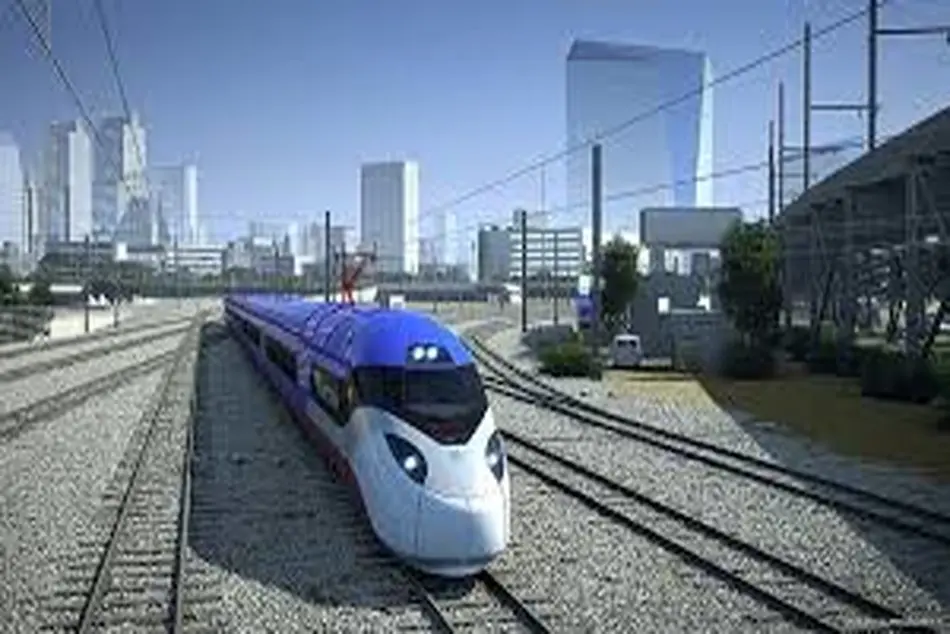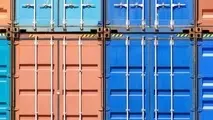Developing the new TGV, brick by brick

Since it was launched in 1981, the TGV has become Alstom’s blue ribbon product. But what might the TGV of the Future look like? Kevin Smith visits Alstom’s headquarters in Paris to find out more about the joint government-industry programme that is underway to develop France’s next-generation high-speed train.
The articulated trains will expand the fleet to enable half-hourly peak Acela Express services between Washington DC and New York and an hourly New York - Boston connection when they enter operation from 2021. They will run at up to 257km/h initially, but could potentially hit 300km/h in the long-term.
The contract served as a real statement of intent for the future of the United States national passenger operator’s flagship service. It was also a major coup for the successful bidder, Alstom: both in securing the contract amidst strong competition from other suppliers, and as an early vote of confidence in its new generation high-speed platform, Avelia.
Amtrak’s Avelia Liberty trains will consist of two compact power cars and nine intermediate trailers. Each train will accommodate up to 33% more passengers than the Acela, while Alstom says it will be possible to lengthen the train with up to three additional cars if required.
This flexibility is at the heart of the Avelia platform, which according to Mr Jean-Marc Tessier, Alstom’s vice-president of main-lines and project director of TGV2020, is rationalising the manufacturer’s high-speed and very high-speed rolling stock offering.
Indeed, rather than offering bespoke solutions, Tessier says the emphasis is now developing “bricks” of technology. Specific bricks include the traction system and train control, and various car configuration and passenger experience solutions that can be offered in a range of combinations to meet the needs of a specific client or tender.
While the Amtrak project is the first reference for Avelia in the market, the French government-backed “TGV of the Future” programme is actually driving the development of the platform ahead of a major order for the train by French National Railways (SNCF).
Tessier says that as part of its TGV2020 strategy, SNCF launched a “partnership of innovation” tender two years ago. This innovative approach is supported by the European Commission’s (EC) Europe 2020 strategy and enables SNCF to identify a supplier with which it can work to find the optimal solution for a particular project, in this case the development of its next-generation high-speed train. Alstom subsequently won the bid, with the project getting underway in May 2016.
“The idea is to define the best train together with SNCF by identifying what exactly will help them to achieve their major objectives: decreasing acquisition and operation costs as well as cutting the cost of maintenance and energy consumption,” Tessier says.
Speedinnov
In parallel, in 2015 the French government launched its Future Investment Programme (PIA) for various industries. The transport element is led by Ademe, a government agency which funds sustainability projects, which together with Alstom formed the Speedinnov joint venture in 2015 to work on, and ultimately deliver, the TGV of the Future project. Alstom retains a majority share in Speedinnov, which is also supported by the Ministry of Ecology, Sustainable Development and Energy, the Ministry of Education, Higher Education and Research, and the Ministry of Economy, Industry and Digital.
Mr Stéphane Kaba, Alstom’s high-speed development director and president of Speedinnov, says the joint venture was established at a time when the profitability of French train operations was being squeezed. Low-cost airlines, car sharing and long-distance bus operators had all accrued significant market shares and the government was keen to reorient this back towards rail.
Increasing the attractiveness of the services to passengers is aligned with SNCF’s new high-speed strategy and the inOui brand, which it will launch when the new Sud Europ Atlantique and Bretagne-Pays de la Loire LGV lines open on July 2.
For Kaba this is a major shift compared with the start of the TGV programme 35-40 years ago. At this time, he says the question of service and meeting different passenger needs was not really considered. But in light of fierce competition from other modes it is now integral to SNCF’s offering.
“In the past we had trains with a lifespan of 30-40 years with the same design and layout - first class, the restaurant car, and second class were always in the same place on the train,” Kaba says. “This time is over. One of the key guidelines coming from the operating companies like SNCF, the French government, and through the Speedinnov joint venture is to have a technical chip, like the aircraft industry, where you can adapt the offering according to different types of passenger experience. They want a train for 40 years so it is important for the operator to understand that this train answers the passengers’ needs.”
As well as harnessing technical innovation that will make the train attractive once again to French passengers, Kaba says reducing the cost of using rail services is critical to bringing people back. As a result, manufacturing a cheaper train is an underlying objective for the TGV of the Future programme.
“One of the key guidelines is to develop a train with not only lower acquisition costs - 20% less compared with the train before - but also to create an overall system where the total cost of ownership for the duration of 30-40 years is dramatically less than we have today,” Kaba says.
As a result, Tessier says in the initial partnership of innovation phase a great deal of thought is directed at identifying the right technologies and solutions that will achieve this and to avoid a scenario where SNCF might waste money on items that provide limited benefit.
For example, he says in the past an SNCF engineer might have asked for everything they wanted without knowing the consequences in terms of cost and benefit.
“Now we are in a situation where we can say that if you select this option it will cost you that much, if you select that, it will cost you this much,” Tessier says. “Comparing this will help you decide as an operator what is best for you: will it bring more passengers on board? Will it change nothing? Will it change the perception of passengers? It is much more focused on the passenger and the business, and what the train brings to passengers in order to compete effectively with other modes of transport.”
To identify these needs he says it is essential that the partnership of innovation process is a true partnership, with both sides contributing their relevant expertise to identify the optimal solution. “It is not like it was in the past where SNCF was checking every detail of what we were doing,” Tessier says. “Instead we are combining our experience. They have a lot of experience in maintenance and also about how our train is behaving after 15, 20, 30 years of operation. By sharing all of this experience we are in a position to make the best decisions.”
Order
With Alstom and SNCF now 14 months into the 18-month development project, providing Alstom meets the objectives of the partnership, SNCF will soon have the opportunity to order trains.
Like it is for Amtrak, Speedinnov will be responsible for developing and delivering the train for SNCF under any contract awarded. While Kaba says that it is too early to say when exactly any contract will be offered, and what specific technologies will be used, Tessier emphasises that any technology will be considered as long as there are benefits in terms of the final solution.
In some cases, he says it is likely that technologies used for the past 30 years will be retained because they remain the most suitable solution. In others it is conceivable that the train will adopt technologies pioneered in Alstom’s previous high-speed offerings such as AGV and Pendolino, or even Speedelia, the concept developed for an Italian high-speed tender, which Bombardier and AnsaldoBreda (now Hitachi Rail Italy) won in 2010.
Tessier adds that while Avelia is its next-generation train, these earlier platforms are not necessarily defunct in their own right, and depending on the contract, they might still be offered.
“When you look at the market and the contracts that have been won for high-speed and very high-speed around the world - in Spain, with Amtrak, and in Saudi Arabia - they were all push-pull configurations,” Tessier says. “There is a market for different configurations, but for AGV we will see. We have not been in a position to offer this train very often.”
The joint venture is also working on new innovations, particularly regarding improving energy efficiency, which in light of the COP21 agreement is now a major consideration for train operators. Tessier says it is similarly ready to adapt to any technical revolution that occurs, including to new developments from research initiatives such as the Shift2Rail programme.
“We know the history of the train is not finished once it is designed for the first time. It will continue to evolve,” Tessier says. “For the Shift2Rail programme, the ones we are involved in, we expect that we can introduce these in the medium term compared with what we want to deliver in the short term. You might have other technologies which alter the bricks and in the past the TGV has been adapted to several new technologies as they become available. This shows the evolution of the train.”
Embracing cutting-edge technologies where appropriate aligns with the government’s desire for PIA to reinvigorate domestic industry and enable French companies to compete for business both at home and overseas.
For Alstom, this contrasts with its previous approach to TGV, which was very much a French project with only a few export orders. Kaba says emphasising the bricks approach will equip it with a platform capable of effectively competing for international contracts, and combat the threat posed by its aggressive Chinese competitors.
While it is likely that 90% of the train will remain common for each order secured, he says the remaining 10% will be customer-defined. The Amtrak contract epitomises this approach. Unlike SNCF, which favours double-deck high-speed rolling stock, Amtrak wanted a single-deck solution. And while France is a mature high-speed market, Kuala Lumpur - Singapore, and proposed projects in the Middle East are new, and will have varying cultural demands on how the train should look and feel, meaning that what is offered could vary substantially.
“Between the power cars you can have different things, so you may have single-deck and double-deck and you may increase the number of cars,” Kaba says. “This is very interesting for the British market for example, where you have residual value, and it is very important where the franchise model is used in more and more countries, so you can use what you have in different ways. This is a big advantage for the project.”
With a general lack of high-speed rolling stock orders around the world, and with competition fierce to supply what are often iconic trains, there is big pressure to succeed in the market. Alstom clearly hopes that the fresh approach employed in Avelia will give it the flexibility to offer a relevant and affordable product anywhere in the world. And with major contracts coming up for HS2 in Britain, and Kuala Lumpur - Singapore, it will soon become apparent whether they have got it right.
